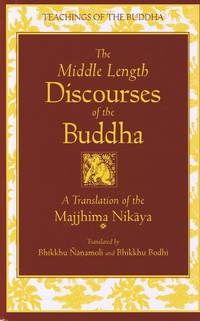Evaluating Research:
Author's Preface/Introduction
I never read the preface or introduction to books until I went to graduate school. It was only then that I realized how important the information provided from those two sources could be in determining the credibility of the publication.
By reading the preface and introduction, you can often learn about the methodology employed in the research, any bias the author is introducing into the text, upon whose work the author is building, and who has influenced the author.
Discussion
When I was drafting this page, I was also reading the introduction to The Middle Length Discourses of the Buddha as translated by Bhikkhu Nanamoli and Bhikkhu Bodhi.
In the introduction to that book, I not only obtained information about how decisions were made in translating the Majjhima Nikaya from the original Pali1, but I also received an education into the structure of the text as well as information in how to interpret the suttas2. As a researcher, such information is extremely important to me and will allow me to better appreciate the discourses while making decisions about the validity of the translation. Because I do not know Pali, I cannot do the translations myself.
Special Note on Web Pages

Web pages, unlike books, do not have sections called "Preface" or "Introduction." However, the information found in the preface and introduction of a book can often be found in the pages that tell about the web site.
An example of such a space is "Wikipedia: About" where you can learn about the philosophy behind the website and the methodology used to write and update articles.
1Pali is an ancient India language. The teachings of the Buddha were originally written in Pali and, for Theravada Buddhists, the Pali Cannon is extremely important.
2A sutta is a discourse of the Buddha. Because I use the word "sutta," you know that I am writing from the Theravada tradition. Were I studying from the Mahayana tradition, I would have written "sutra." The two words have the same meaning, but Theravada Buddhists read the teachings of the Buddha in Pali and therefore I use the Pali term. Mahayana Buddhists read the teachings of the Buddha in Sanskrit and would therefore refer to the discourses as "sutras."
